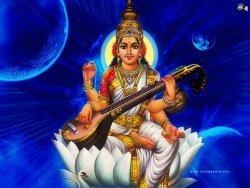Difference between revisions of "Eighty indicative conceptions"
Jump to navigation
Jump to search
| Line 1: | Line 1: | ||
{{DisplayImages|2938|3291}} | {{DisplayImages|2938|3291}} | ||
| − | '''[[Eighty indicative conceptions]]''' ([[Wyl.]] ''[[rang bzhin brgyad cu‘i kun rtog]]'') — various emotional and cognitive states. They are divided into three groups: | + | '''[[Eighty indicative conceptions]]''' ([[Wyl.]] ''[[rang bzhin brgyad cu‘i kun rtog]]'') — various [[emotional]] and [[cognitive]] states. They are divided into three groups: |
*the ''first group'' (which are states resulting from [[anger]]) has '''thirty-three''', | *the ''first group'' (which are states resulting from [[anger]]) has '''thirty-three''', | ||
*the ''second'' (which are states resulting from [[desire]]) has '''forty''', and | *the ''second'' (which are states resulting from [[desire]]) has '''forty''', and | ||
| Line 6: | Line 6: | ||
==Alternative Translations== | ==Alternative Translations== | ||
| − | *eighty inherent thought states | + | *[[eighty inherent thought states]] |
==Further Reading== | ==Further Reading== | ||
| Line 13: | Line 13: | ||
*[[Sogyal Rinpoche]], ''[[The Tibetan Book of Living and Dying]]'' (revised and updated edition, Harper San Francisco, 2002), 'The Inner Dissolution', page 258. | *[[Sogyal Rinpoche]], ''[[The Tibetan Book of Living and Dying]]'' (revised and updated edition, Harper San Francisco, 2002), 'The Inner Dissolution', page 258. | ||
*[[Tsele Natsok Rangdrol]], ''Mirror of Mindfulness'' (Boston & Shaftesbury: Shambhala, 1989), pages 32-34.}} | *[[Tsele Natsok Rangdrol]], ''Mirror of Mindfulness'' (Boston & Shaftesbury: Shambhala, 1989), pages 32-34.}} | ||
| + | |||
{{RigpaWiki}} | {{RigpaWiki}} | ||
| + | |||
[[Category:Bardo]] | [[Category:Bardo]] | ||
{{BuddhismbyNumber}} | {{BuddhismbyNumber}} | ||
Latest revision as of 09:47, 7 July 2014
Eighty indicative conceptions (Wyl. rang bzhin brgyad cu‘i kun rtog) — various emotional and cognitive states. They are divided into three groups:
- the first group (which are states resulting from anger) has thirty-three,
- the second (which are states resulting from desire) has forty, and
- the third (which are states resulting from ignorance) has seven types of conceptualization.
Alternative Translations
Further Reading
- Glossary in Tsele Natsok Rangdrol, Lamp of Mahamudra (Boston & Shaftesbury: Shambhala, 1989), pages 83-84.
- Dalai Lama, Vision of Enlightenment, page 264 and 300.
- Sogyal Rinpoche, The Tibetan Book of Living and Dying (revised and updated edition, Harper San Francisco, 2002), 'The Inner Dissolution', page 258.
- Tsele Natsok Rangdrol, Mirror of Mindfulness (Boston & Shaftesbury: Shambhala, 1989), pages 32-34.

